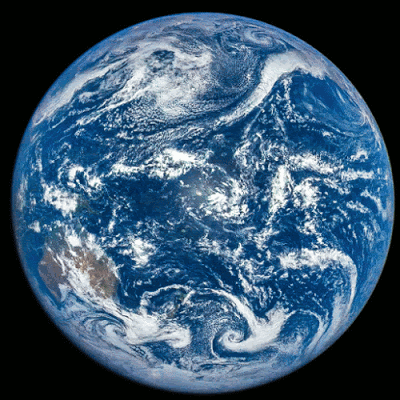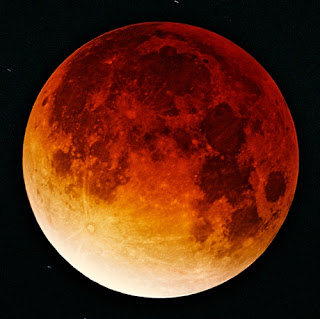Today I’m going to write about perspective. Not in the artistic sense, nor even in the sense that on any given topic we each have our own, but in the cosmic sense. You see, there’s a condition that afflicts all life as we know of and that has ever been. That condition is called existence, and as the only known species with the intelligence to comprehend what that means it can be easy to get full of ourselves and lose sight of the big picture.
As with any good conversation on this topic, it’s probably a good idea to lead with a little Carl Sagan. Many of you have seen this picture before.
 |
| NASA – Image in the public domain |
It was taken in 1990 by the Voyager I probe on February 14 at the request of Carl Sagan. It took a decade for the request to come to fruition, but after it did here’s what he had to say about it.
We succeeded in taking that picture [from deep space], and, if you look at it, you see a dot. That’s here. That’s home. That’s us. On it, everyone you ever heard of, every human being who ever lived, lived out their lives. The aggregate of all our joys and sufferings, thousands of confident religions, ideologies and economic doctrines, every hunter and forager, every hero and coward, every creator and destroyer of civilizations, every king and peasant, every young couple in love, every hopeful child, every mother and father, every inventor and explorer, every teacher of morals, every corrupt politician, every superstar, every supreme leader, every saint and sinner in the history of our species, lived there on a mote of dust, suspended in a sunbeam.The Earth is a very small stage in a vast cosmic arena. Think of the rivers of blood spilled by all those generals and emperors so that in glory and in triumph they could become the momentary masters of a fraction of a dot. Think of the endless cruelties visited by the inhabitants of one corner of the dot on scarcely distinguishable inhabitants of some other corner of the dot. How frequent their misunderstandings, how eager they are to kill one another, how fervent their hatreds. Our posturings, our imagined self-importance, the delusion that we have some privileged position in the universe, are challenged by this point of pale light.Our planet is a lonely speck in the great enveloping cosmic dark. In our obscurity – in all this vastness – there is no hint that help will come from elsewhere to save us from ourselves. It is up to us. It’s been said that astronomy is a humbling, and I might add, a character-building experience. To my mind, there is perhaps no better demonstration of the folly of human conceits than this distant image of our tiny world. To me, it underscores our responsibility to deal more kindly and compassionately with one another and to preserve and cherish that pale blue dot, the only home we’ve ever known.— Carl Sagan, speech at Cornell University, October 13, 1994
To give you an idea of exactly how far away Voyager I was when it took that photograph, here’s a picture, though it’s not to scale. As we’ll see in a bit the scale of the Solar System, and indeed the Universe, is staggeringly massive.
 |
| Joe Haythornthwaite and Tom Ruen [CC BY-SA 4.0], from Wikimedia Commons |
How far away is that? It’s far. I mean, really far. The Pale Blue Dot photograph was taken 6 billion kilometers (3.7 billion miles) away. If you zoom in on the above photo you will see a date beside the white line near earth. In September 1977 Voyager I was launched, and traveling at an average speed of roughly 60,000 km/h ( mph) took thirteen years to get that far away. Space is big.
Someone put together a fascinating GIF of the solar system and all the “stuff” in it. Here we see one Earth year of movement compressed into five seconds.
 |
| https://s-media-cache-ak0.pinimg.com/originals/5a/a4/4c/5aa44c326b9d7e83f3c0b77852544612.gif |
Take a look at Neptune (blue circle, top left). In one Earth year, it has barely moved. In fact, it takes Neptune 165 years to make a single trip around the Sun. When Neptunians say “winter is coming” and have a look of concern on their faces, it’s for good reason.
But let’s start a bit closer to home, shall we? The Earth in of itself is a pretty big chunk of rock and it’s configured in the Solar System in such a way that at any given point in time half of it is in darkness. There’s a neat map from our friends at Solar System Scope that shows you night and day across the planet: http://www.solarsystemscope.com/daylightmap/
If you want to be truly mesmerized then the International Space Station has a live feed from one of its cameras that you can watch. Flat Earthers beware, from these cameras alone there’s sufficient evidence to put a hefty dent in your little “theory”: http://www.ustream.tv/channel/iss-hdev-payload
Humans have also spent a great deal of time, energy, and money putting satellites and cameras and telescopes into space to help us understand not just our home, but our surroundings, and our place in the Solar System (and indeed the Universe). One of the coolest series of pictures I’ve seen is a solar eclipse as seen from beyond the Moon and the ultimate photobomb of the Moon getting in between a weather satellite and the Earth:
 |
| Image Courtesy NASA (via Tumblr) |
 |
| Image Courtesy NASA |
That last GIF makes the moon look pretty small. As it was, it took the Apollo space missions about three days to get there. Did I mention that space was big? Well, what if the moon were the size of a single pixel on your screen right now? It’s a cool exercise to ponder and it gives us a real sense of the vastness of our surroundings. In fact, someone thought it was so cool that they created a model for it. Spend a few minutes scrolling (and scrolling and scrolling and scrolling) through it. It’ll blow your mind.
If the Moon Were 1-Pixel: http://joshworth.com/dev/pixelspace/pixelspace_solarsystem.html
The folks over at Khan Academy have done this awesome video which also provides a bit of scale to our celestial neck of the woods:
This is all well and good, but what about beyond our Solar System? We orbit but one star out of hundreds of billions in our galaxy alone and our galaxy is but one of trillions in the observable Universe. To get a sense of what lies immediately beyond our Sun there are a couple of really cool, interactive sites you can visit:
Our Stellar Neighborhood, http://stars.chromeexperiments.com/, allows you to zoom and pan and view 100,000 of the nearest stars. Solar System Model, https://www.solarsystemscope.com/, is a similar tool, but this one has more features and also includes options to show spacecraft, constellations, dwarf planets, comets, and a lot more. Still, nothing we’ve seen so far gets us out of our galaxy, the Milky Way, at the center of which is a black hole.
Black holes sit at the center of just about every galaxy and if you thought things were big before, check out this video on just how massive some of these things get:
And there are more than a trillion of them. Most people don’t have much of a sense of how big a trillion of something is. Let’s put that number into context. I think everyone will agree that one second is pretty quick. If you string enough of them together though, you start to see how they add up. For example, a thousand seconds is roughly 16.67 minutes. A hundred thousand seconds is a little over a day (1.157 and change). A million seconds is ten times that or about eleven and half days. A billion seconds is 31.69 years. A trillion seconds? 31,688 years. So yeah, big.
A few years ago, while pondering the vastness of the Universe, some smart person at NASA decided that they would take the Hubble Telescope and point it at a small square of nothingness to see, well, what they could see. Suffice it to say they were not disappointed.
 |
| https://www.nasa.gov/mission_pages/hubble/science/xdf.html |
Every bit of light you see in that picture is a galaxy. In each galaxy are hundreds of billions of stars. This picture represents only a fraction of a fraction of a fraction of the sphere of our night sky. To photograph the rest of it you would need to take another 12,913,983 pictures. What would that look like? Something like this:
 |
| Wikipedia Commons |
Note that the above image isn’t to scale. Not even remotely close, to be honest. So exactly how big is the Universe?
Which is all fine and dandy, but again, people have a hard time comprehending the scale. All of our reference points are too small and too slow. Fortunately, someone at NASA put together something that shows that even if you travel at the upper limit for speed – the speed of light – it takes a really long time to get anywhere. One could say that the speed of light in that respect is rather slow. Put another way, space is huge.
 |
| How long it takes for light to travel between the Earth and Moon |
 |
| How long it takes for light to travel between the Earth and Mars |
Finally, for anyone wondering where God and religion fit in, I will leave you with this (enlarge the photo when it loads and scroll):
http://img.gawkerassets.com/img/19eyi7t3h9ocnjpg/ku-xlarge.jpg
~ Andrew

